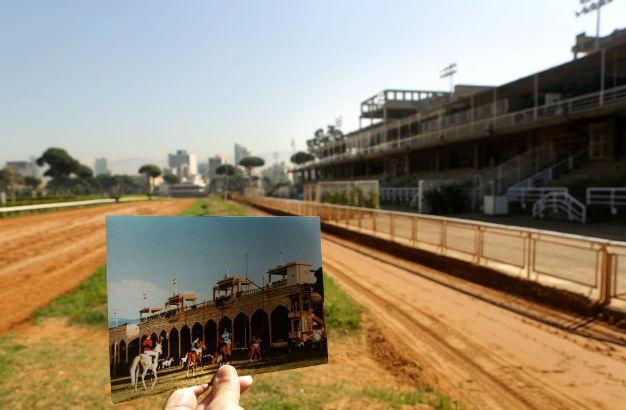Beirut’s Ottoman-era Hippodrome faces run for money
BEIRUT - Agence France-Presse

AFP photo
Beirut’s Hippodrome has survived wars and relentless upheaval but the iconic racetrack, where rival fighters once gathered to bet on their days off, is approaching its centenary facing an uncertain future.
The Hippodrome was built in 1916 by the Ottoman Turks. During the civil war it was used as a neutral site where enemy combatants could meet.
One of the city’s last remaining green spaces, it is now suffering financial difficulties and a dearth of investment. Should the racecourse close for good, the land could fall into the hands of property developers who have already turned Beirut into a concrete jungle.
“The city council refuses to invest, each time offering a different excuse, and this really worries us,” said Nabil de Freige, the head of the Society for the Protection and Improvement of the Arabian Horse.
De Freige, who is also Lebanon’s minister for administrative reform, fears that the country’s ancient tradition of horse breeding will suffer a heavy blow if the racetrack shuts.
“This place provides a livelihood for trainers, jockeys, grooms, employees, vets, breeders and farmers - 1,500 families in total - and all that will disappear,” he said.
Before Lebanon’s 1975-1990 civil war, the track was the only one in the Middle East where horse-racing fans could gather to place their bets. Races were held twice a week, bringing in about half a million dollars a week in wagers. But the war reduced the number of horses kept in stables around the racecourse from 1,500 to 350.
“Races were no longer held, and the bets dropped to no more than $150,000 [a week],” said racecourse general manager Nabil Nasrallah.
The Hippodrome, a potential gold mine for developers, covers an area of 200,000 square meters in the heart of the Lebanese capital.
“If the Hippodrome closes, what guarantee would there be?” de Freige asked, questioning how the land could be kept from the developers.
Nasrallah believes the only way forward is for the city council, which owns the racecourse, to invest in rebuilding the site.
“We should be subsidized, like in any other country where there are horse races,” he said.
Beirut mayor Bilal Hamad is reluctant to invest public money in a site where betting – which is prohibited in Islam - takes place.
“The Hippodrome is part of Beirut’s heritage. Why should bettors alone have access to it?” said Hamad, who would only agree to pour public funds into the racecourse if it were “opened to all” residents.
Hamad plans instead to set up what he calls Beirut Central Park, a golf course complete with an artificial lake, as well as a riding school.
But Mohammed Ayoub, who heads an NGO named Nahnoo (We), denounced the idea.
“A golf course is a project for the rich. And how can we create an artificial lake when we’re suffering from a water shortage? The city council wants to set up a costly commercial project and then hand it over to a private company,” Ayoub said.
Situated on a former civil war frontline that divided Christian, Sunni and Shiite neighborhoods, the racecourse is a mirror of recent Lebanese history.
A wall, riddled with bullet holes, still shows the green and red symbol of the French Foreign Legion, painted in 1982 by soldiers deployed in the small Mediterranean country at the height of the war.
“Militia fighters used to shoot at each other all week and meet here on Sunday to place their bets,” recalled trainer Ali Ahmed Seif Eddine.
Enemy militia leaders would even meet in a secret hall under the stands.
The racecourse’s various entrances allowed fighters to access the site from parts of the city that were blocked off from each other, and it was public enough to allay any fear of ambush or kidnapping.
During the 1982 Israeli invasion of Lebanon, Israeli forces positioned behind the Hippodrome pounded Palestinian fighters on the other side.
